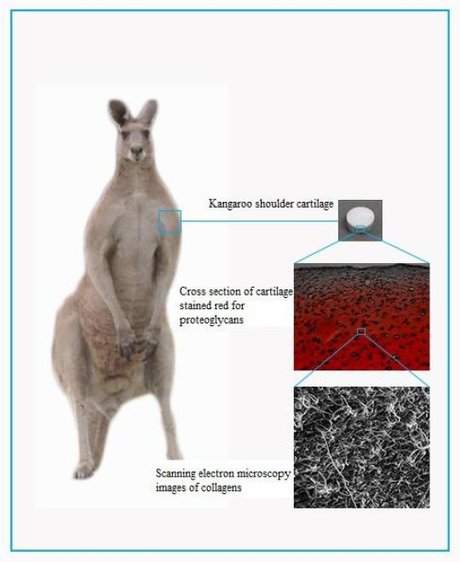Kangaroo cartilage could improve implants

Scientists from Queensland University of Technology (QUT) are studying cartilage — the tissue that absorbs impacts and facilitates movement between major joints — in order to improve implants for joints that have been worn out by age, arthritis or injury. But while these implants will be utilised by humans, the research is being carried out with the help of kangaroos.
“We are studying kangaroo shoulder cartilage as a proxy for human cartilage because kangaroos are a similar-sized biped with shoulder joints similar to humans,” said Professor Yuantong Gu, from the QUT Science and Engineering Faculty. Additionally, both kangaroos and humans use their arms for grabbing, punching and lifting.
The study of cartilage has, until now, been mainly focused on the knee. The new research, however, has compared shoulder and knee cartilage — and it has found that the two are very different.
“The differences we detected in the biomechanics of shoulder and knee joint cartilage are due to shoulders not having to support body weight,” explained QUT PhD student Namal Thibbotuwawa.
“Their function is much different from the weight-bearing knee. Knees are regularly loaded in compression while shoulders are irregularly and randomly loaded and are not required to be able to respond to much compression load.”
Professor Gu said the team’s research, published in the journal Applied Physical Letters, aims to increase understanding of the components of shoulder cartilage so that better implants can be made for worn-out joints. He explained, “Cartilage is a complex tissue with a number of key components — we need to find out what their roles and properties are and then we can try to replicate them.
“We want to provide the fundamental knowledge needed to develop artificial implants with enhanced biomechanical properties to relieve the pain of degraded shoulder joints and restore mobility.”
Colon cancer DNA in blood can guide chemo decisions
A simple blood test could change how doctors decide which patients with colon cancer need...
Non-invasive blood test helps rule out oesophageal cancer
Designed and developed in Australia, the PromarkerEso test is designed to offer a quick,...
Taste-based flu test enables rapid diagnosis
The diagnostic tool consists of the sensor molecule thymol and a virus-specific sugar building...





